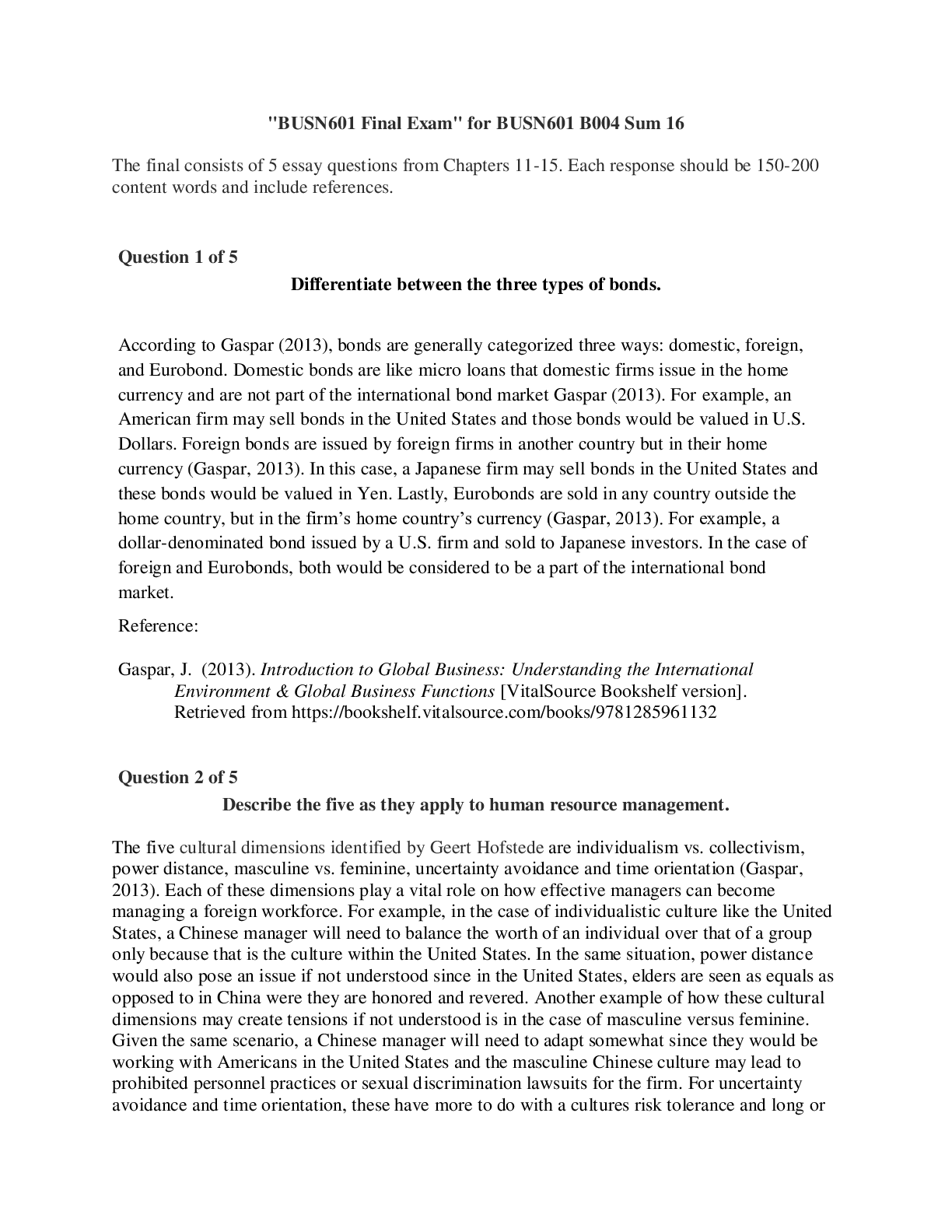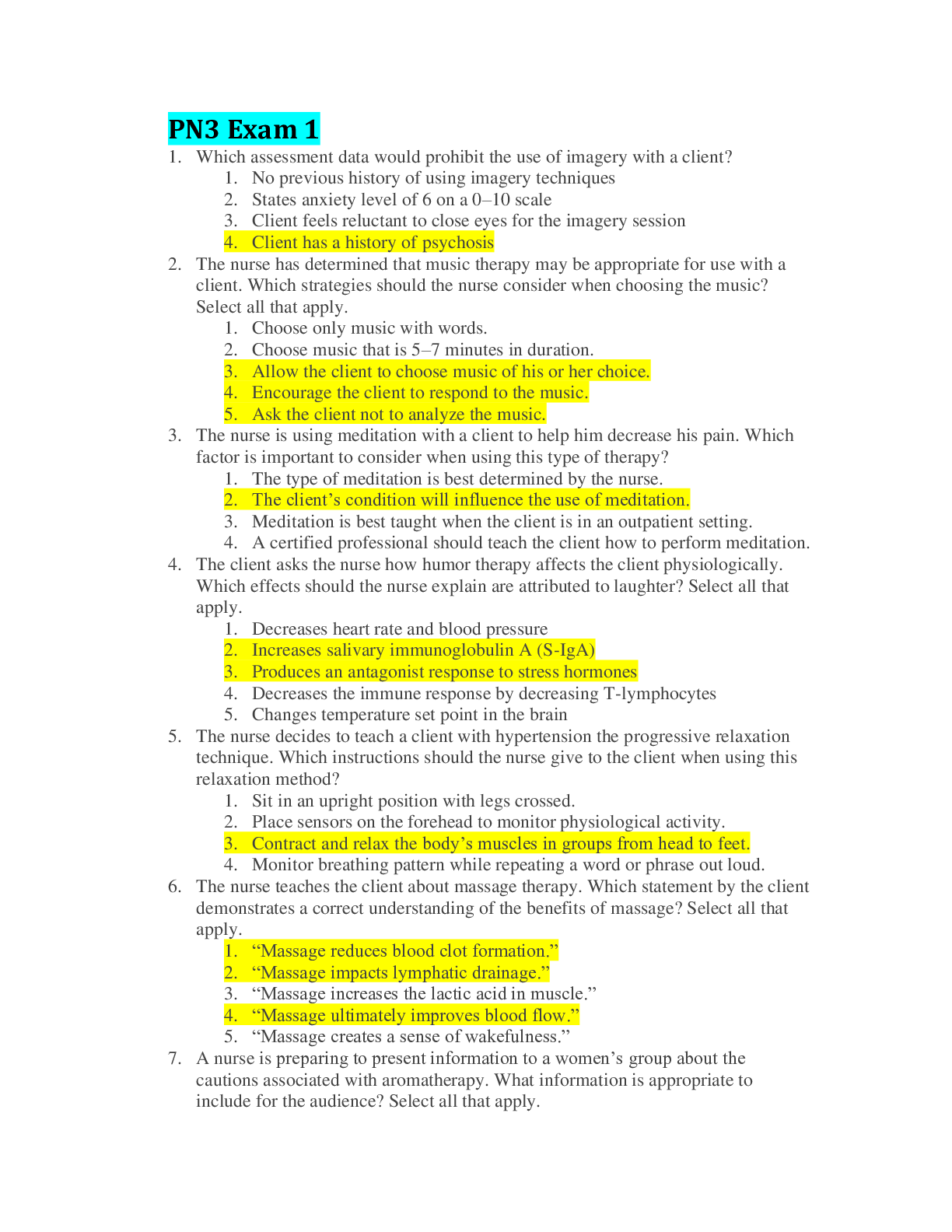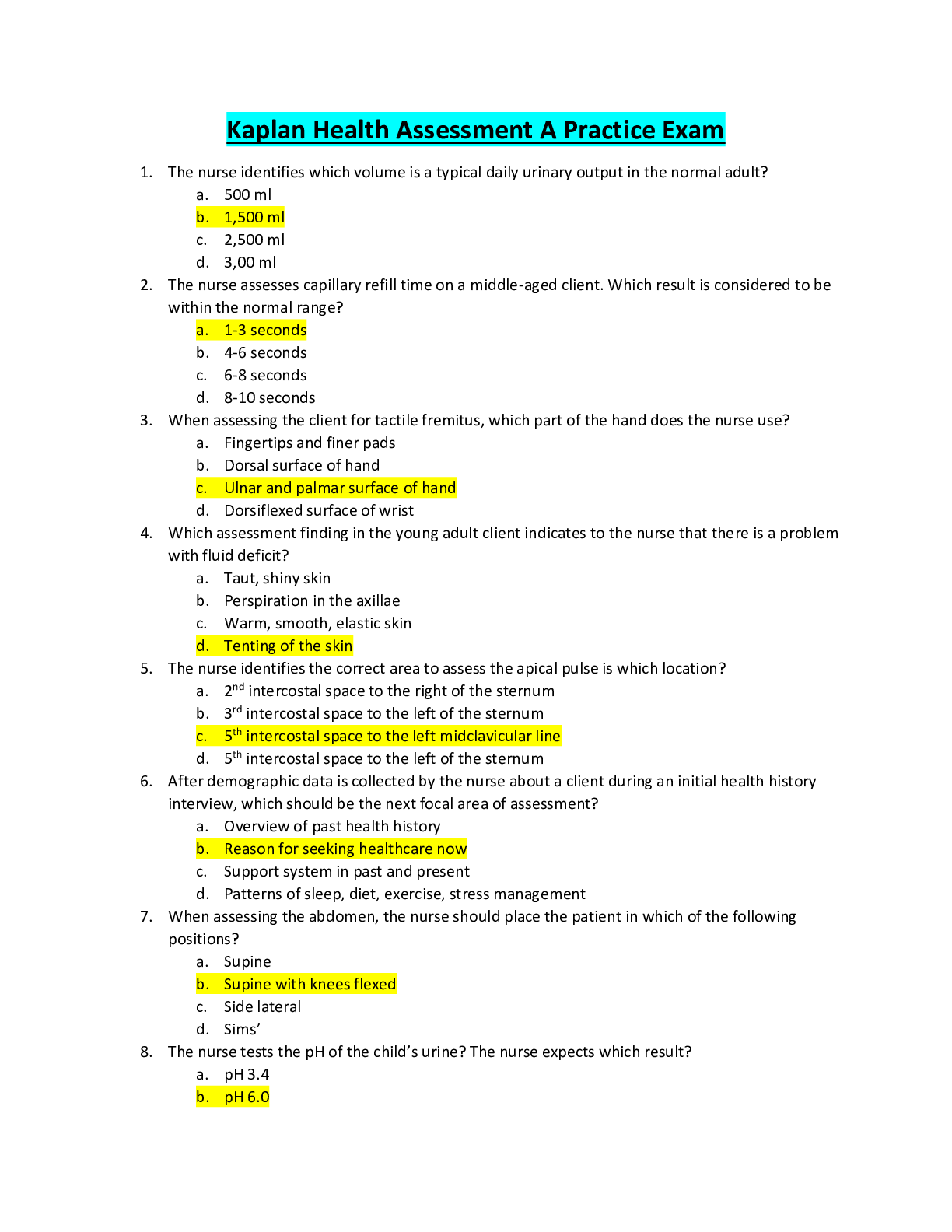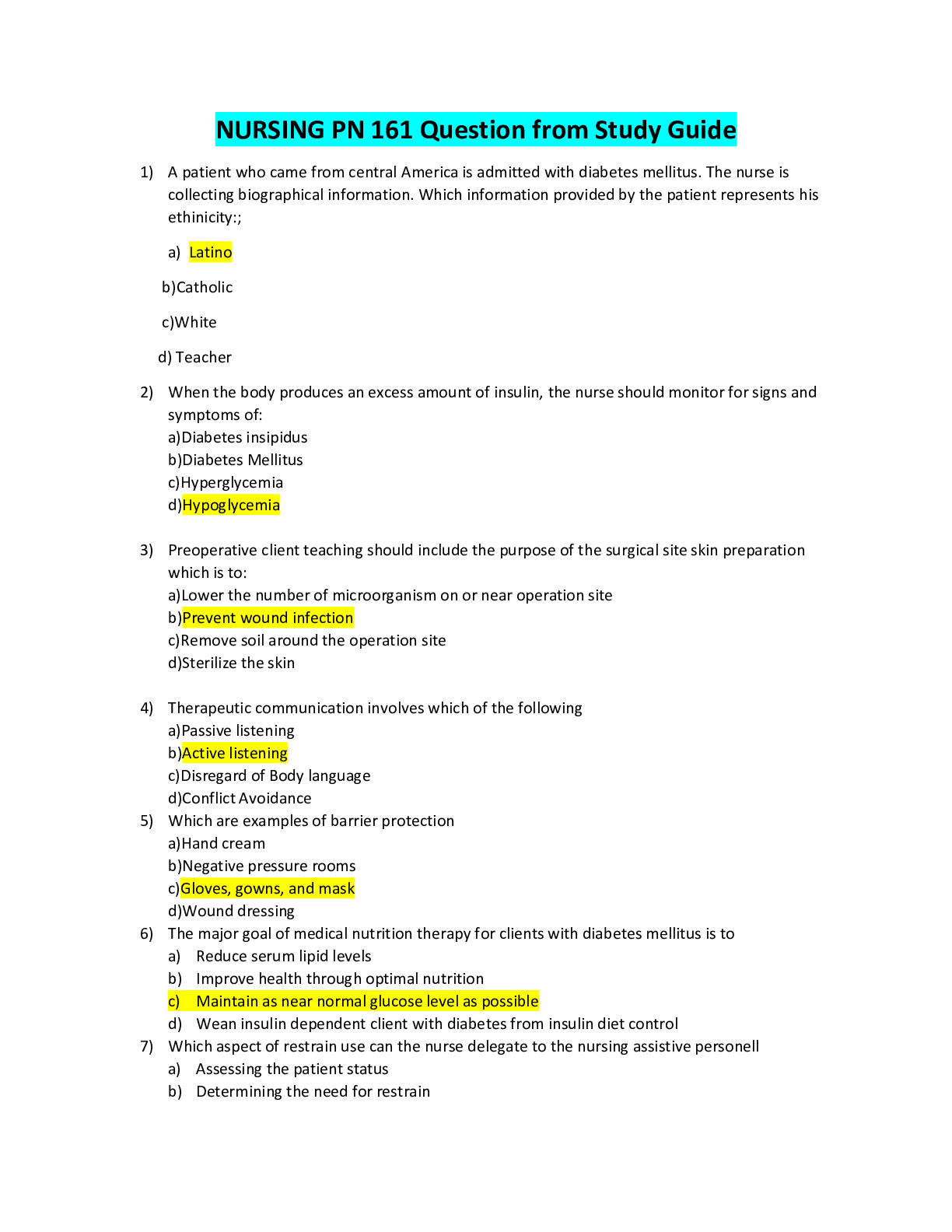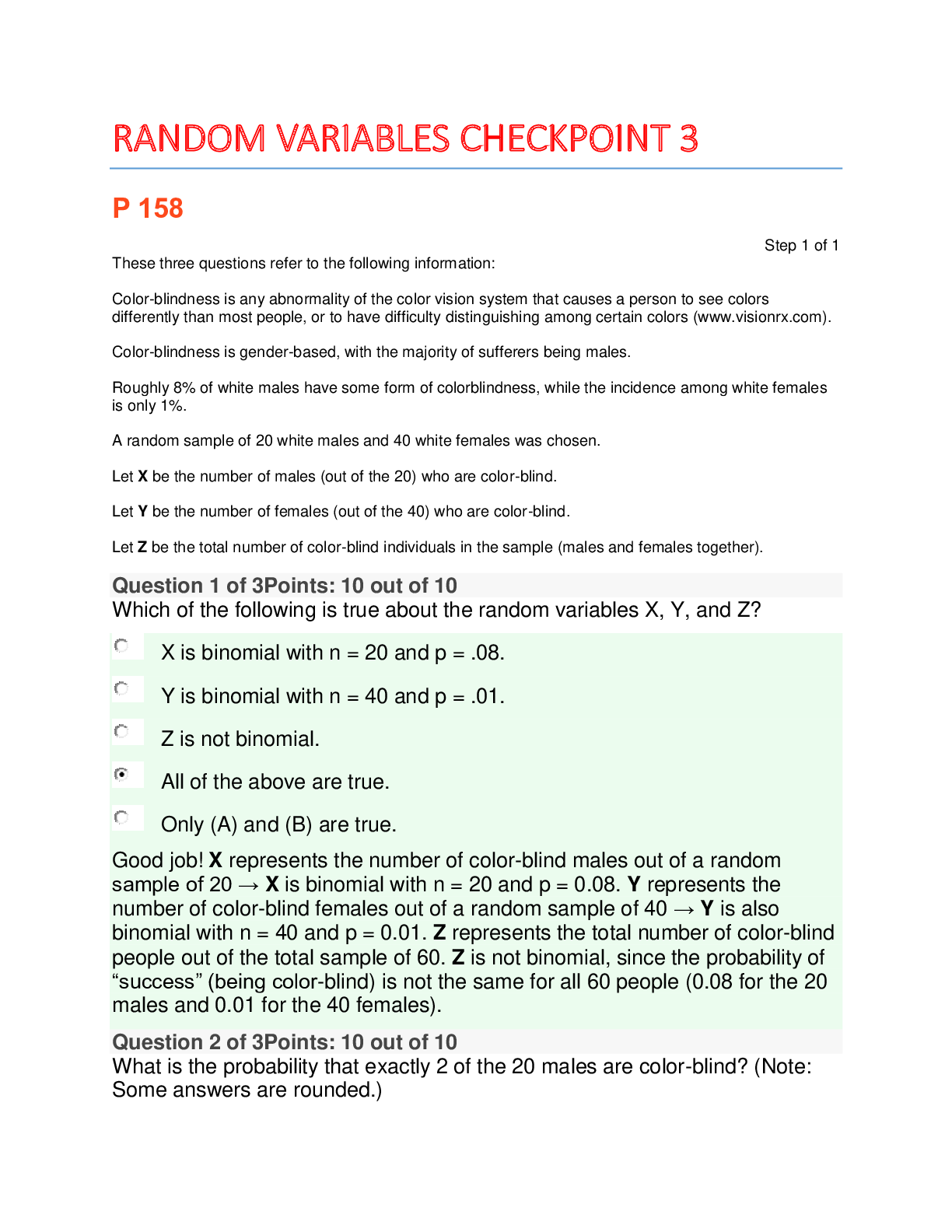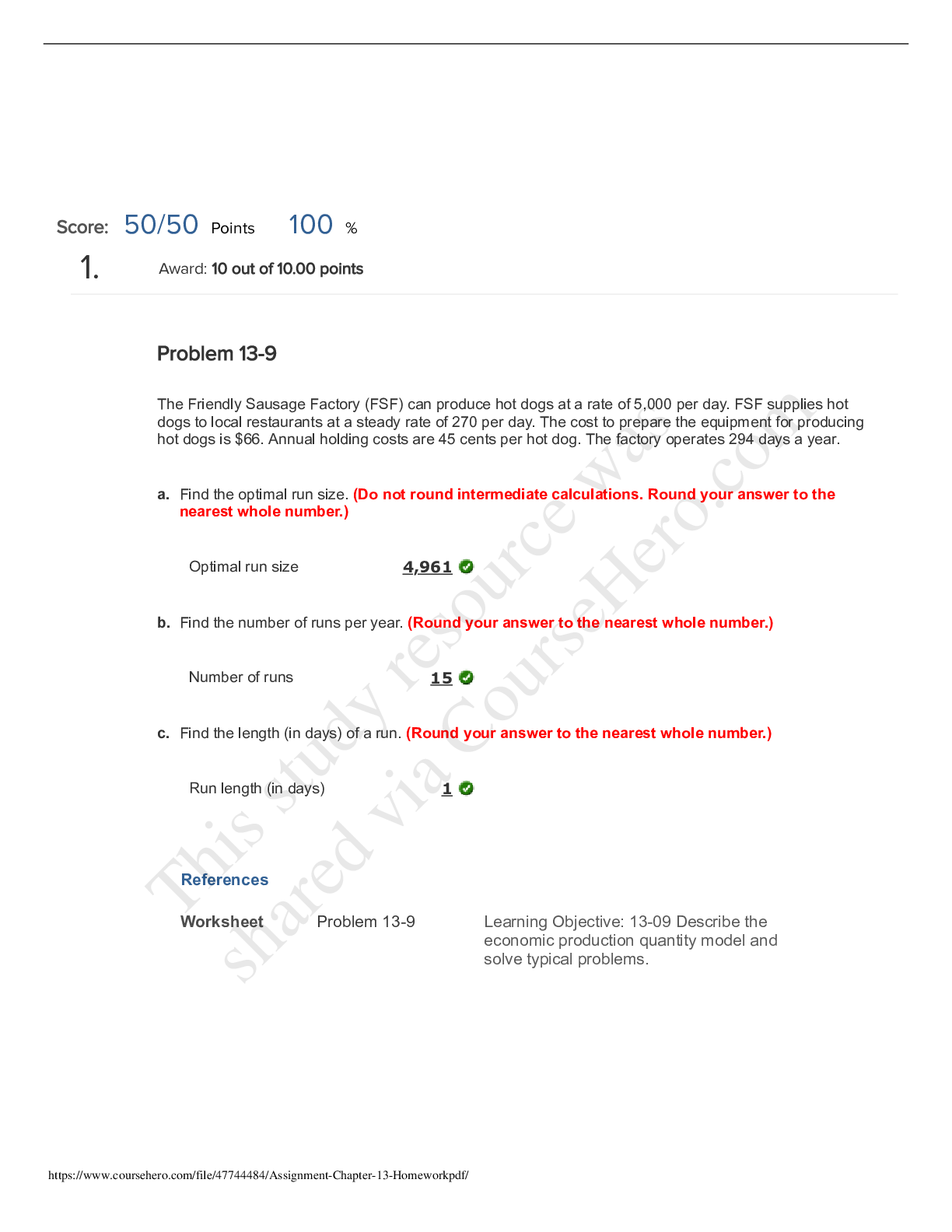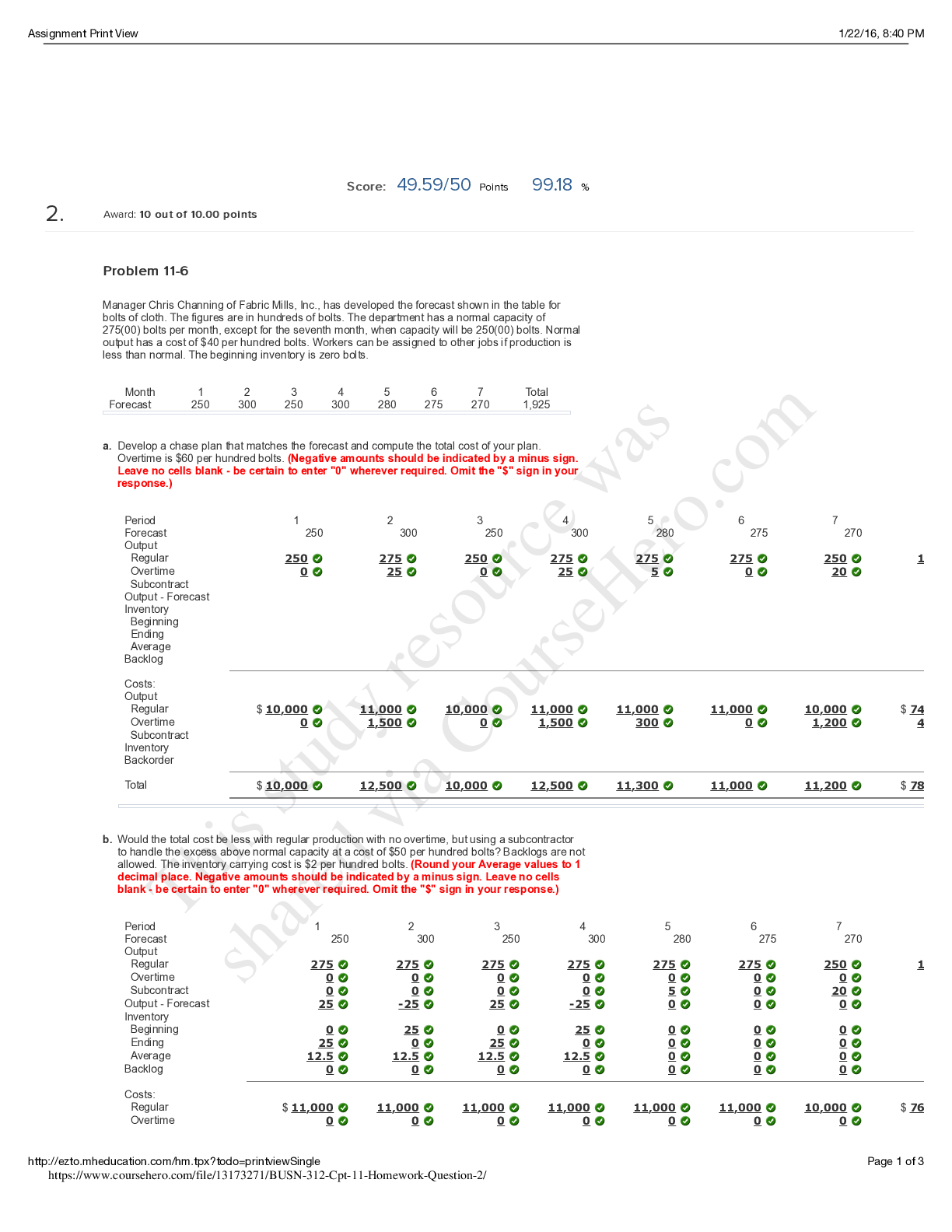Business > QUESTIONS & ANSWERS > American Public University - BUSN 312 BUSN 312 Chapter 13 homework. All Answers 100%. (All)
American Public University - BUSN 312 BUSN 312 Chapter 13 homework. All Answers 100%.
Document Content and Description Below
1. Award: 10 out of 10.00 points Show my answer Problem 13-9 The Friendly Sausage Factory (FSF) can produce hot dogs at a rate of 5,000 per day. FSF supplies hot dogs to local restaurants at... a steady rate of 240 per day. The cost to prepare the equipment for producing hot dogs is $66. Annual holding costs are 45 cents per hot dog. The factory operates 294 days a year. a. Find the optimal run size. (Do not round intermediate calculations. Round your answer to the nearest whole number.) b. Find the number of runs per year. (Round your answer to the nearest whole number.) c. Find the length (in days) of a run. (Round your answer to the nearest whole number.) Explanation: p = 5,000 hotdogs/day u = 240 hotdogs/day D= 240 hotdogs/day × 294 days/yr. = 70,560 hotdogs/yr. 294 days per year a. b. runs/yr. c. run length: Qo/p = 4,663/5,000 = .93 days, or approximately 1 day 2. Award: 10 out of 10.00 points Show my answer Problem 13-13 A mail-order house uses 15,260 boxes a year. Carrying costs are 60 cents per box a year, and ordering costs are $96. The following price schedule applies. a. Determine the optimal order quantity. (Round your answer to the nearest whole number.) Optimal order quantity boxes b. Determine the number of orders per year. (Round your answer to 2 decimal places.) Explanation: a. Since this quantity is feasible in the range 2000 to 4,999, its total cost and the total cost of all lower price breaks (i.e., 5,000 and 10,000) must be compared to see which is lowest. Hence, the best order quantity would be 5,000 boxes. Award: 10 out of 10.00 points Show my answer Problem 13-17 A manager just received a new price list from a supplier. It will now cost $1.00 a box for order quantities of 801 or more boxes, $1.10 a box for 200 to 800 boxes, and $1.20 a box for smaller quantities. Ordering cost is $80 per order and carrying costs are $10 per box a year. The firm uses 3,600 boxes a year. The manager has suggested a “round number” order size of 800 boxes. The manager’s rationale is that with a U-shaped cost curve that is fairly flat at its minimum, the difference in total annual cost between 800 and 801 units would be small anyway. What order size would you recommend? (Round intermediate calculations to 2 decimal places and final answer to the nearest whole number.) Recommended order size Even though the inventory total cost curve is fairly flat around its minimum, when there are quantity discounts, there are multiple U shaped total inventory cost curves for each unit price depending on the unit price. Therefore when the quantity changes from 800 to 801, we shift to a different total cost curve. If we take advantage of the quantity discount and order 801 units, the total cost is computed as follows: The order quantity of 801 is preferred to order quantity of 800 because TCQ=801 < TCQ=800 or 7964.55 < 8320. The order quantity of 800 is not around the flat portion of the curve because the optimal order quantity (EOQ) is much lower than the suggested order quantity of 800. Since the EOQ of 240 boxes provides the lowest total cost, it is the recommended order size. 4. Award: 10 out of 10.00 points Show my answer Problem 13-18 A newspaper publisher uses roughly 820 feet of baling wire each day to secure bundles of newspapers while they are being distributed to carriers. The paper is published Monday through Saturday. Lead time is six workdays. What is the appropriate reorder point quantity, given that the company desires a service level of 95 percent, if that stockout risk for various levels of safety stock is as follows: 1,500 feet, .10; 1,900 feet, .05; 2,100 feet, .02; and 2,400 feet, .01? Appropriate reorder point ft 5. Award: 10 out of 10.00 points Show my answer Problem 13-31 A drugstore uses fixed-order cycles for many of the items it stocks. The manager wants a service level of .98. The order interval is 11 days, and lead time is 2 days. Average demand for one item is 66 units per day, and the standard deviation of demand is 5 units per day. Given the on-hand inventory at the reorder time for each order cycle shown in the following table. Use Table. Determine the order quantities for cycles 1, 2, and 3: (Round your answers to the nearest whole number) [Show More]
Last updated: 2 years ago
Preview 1 out of 6 pages
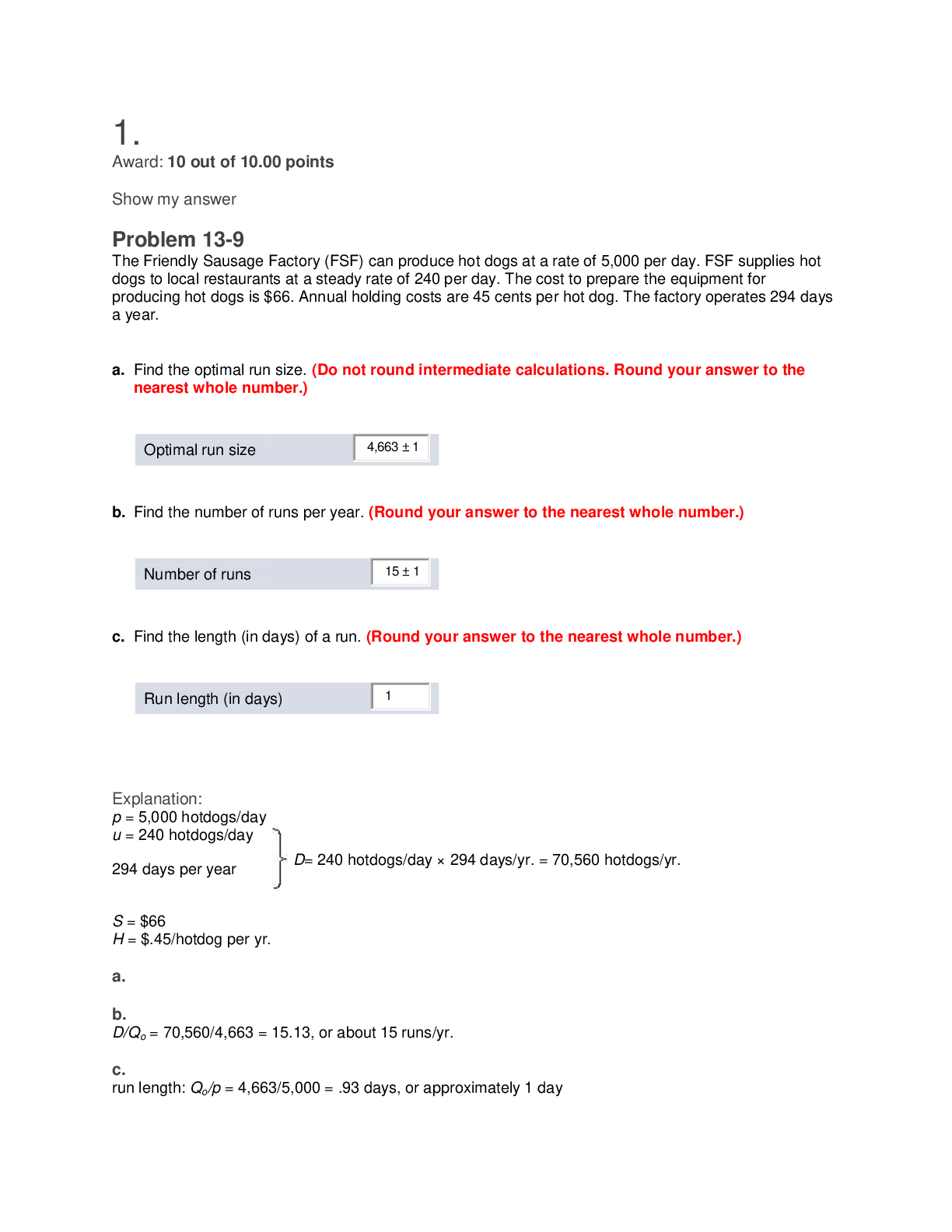
Buy this document to get the full access instantly
Instant Download Access after purchase
Buy NowInstant download
We Accept:

Reviews( 0 )
$13.00
Can't find what you want? Try our AI powered Search
Document information
Connected school, study & course
About the document
Uploaded On
Feb 16, 2021
Number of pages
6
Written in
Additional information
This document has been written for:
Uploaded
Feb 16, 2021
Downloads
0
Views
66


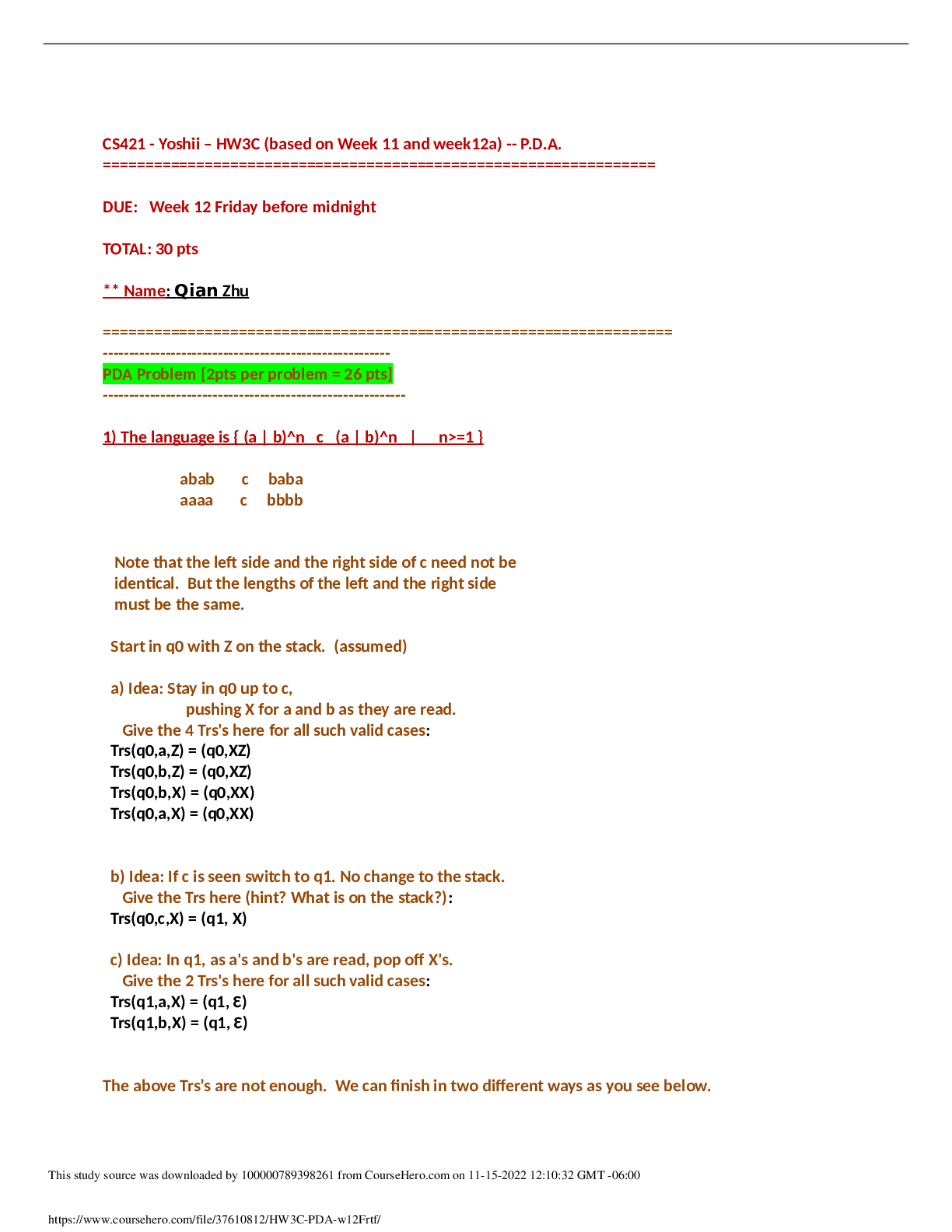


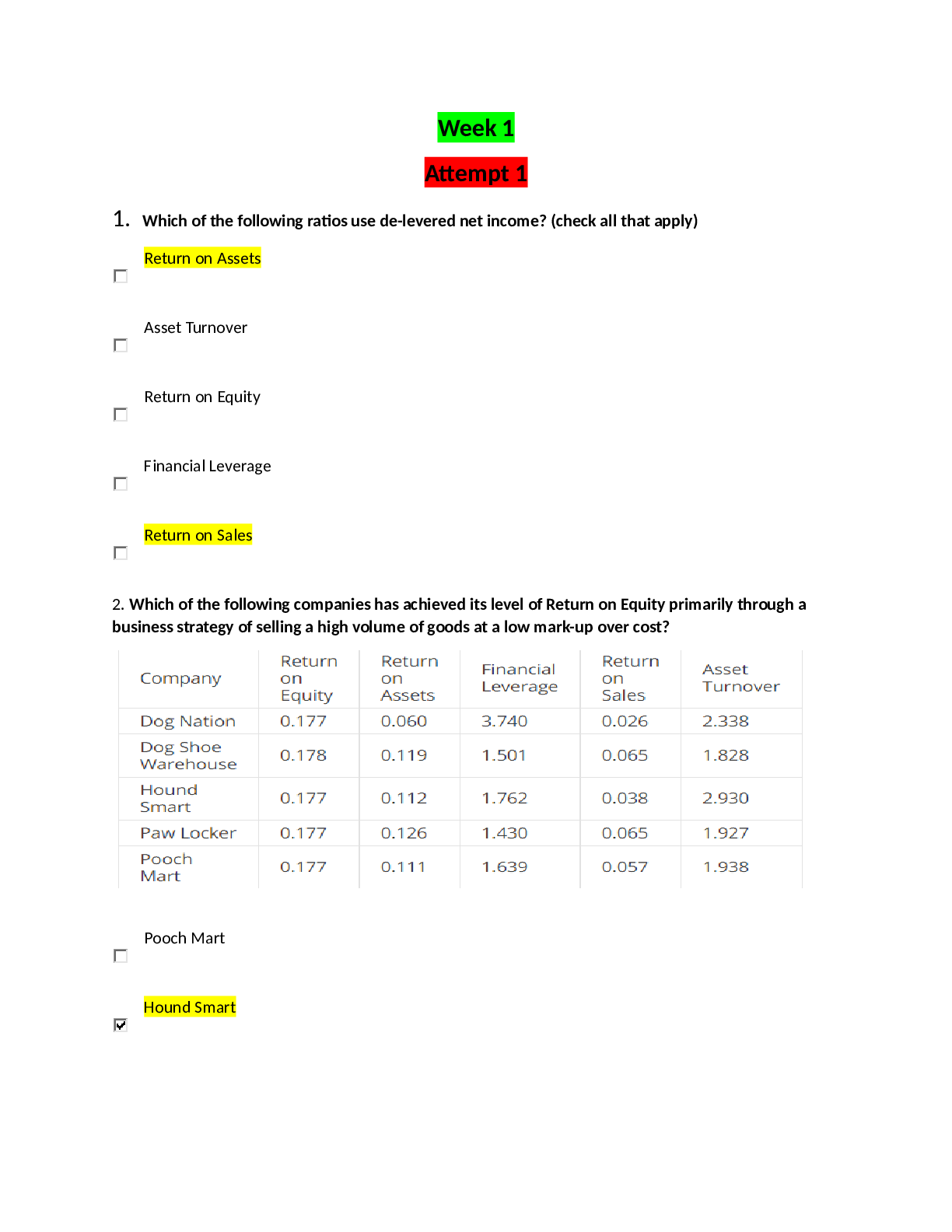
.png)
.png)
.png)
.png)
.png)
.png)
.png)

